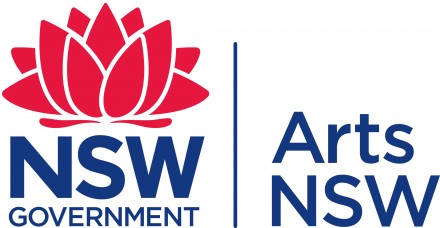MA: One of the similarities between our practices is our inquiries into representation. We look at colonial image-making practice – historical, archival and artistic representations of Country, of bodies and of peoples – images and narratives that are hidden, inaccurate or untrue. Artworks are used by the establishment to push their ideologies. In your poem ‘sidney nolan,’ you write: ‘here is not familiar country / I love what I see but I don’t recognise.’ Artists like Sidney Nolan are celebrated for their portrayal of a particular kind of ‘Australianness’. Can you delve deeper into Sidney Nolan, and your approach to subverting these representations?
SA: The poems where I am challenging ‘Australianness,’ I am also challenging myself. I wanted to use those icons of Australian art as seen in our state museums and galleries because they are familiar to people but encourage people to reconsider them from multiple perspectives.
I discovered Sidney Nolan had lived in the Wimmera during the 1940s when he was training for the army. He had the palette completely right, so on some level I do recognise what he was doing with the works, but I think the word choice is to indicate that there might be more within the landscape that the painter couldn’t see. In fact, as a non-Aboriginal person, he will never have access to it. Other poems in that sequence are broader challenges to the myth-making of an Australian identity.
I have always experienced tension between my ancestral knowledge of landscape and growing up in a sheep-farming country. It’s a place still strongly pushing the terra nullius narrative – although there are some good folks, farmers and allies, don’t get me wrong! But at school or socially, those dominant narratives were hard to trump, before we had language around identity or understanding of duality that didn’t scare the shit out of people who were afraid we’d try to steal their land. My gentle insistence that two things could be true at once, such as how my dad was both Aboriginal and a farmer, is something I wanted to return to through poetry.
But these artistic representations of dry, western plains or horrific, untamable landscapes were the only ones I could see. I think I wrote that poem in about 2017, visiting the gallery in Horsham (where I grew up), and the Nolan piece was on display. At that time, which doesn’t seem so long ago, I feel like access to Aboriginal perspectives was quieter and a little more difficult. Now, our art, writing and perspectives are much more widespread, both in print and online, and I’m glad these are among them. In fact, the gallery just had an exhibition of local blak art.
MA: You behold a tender approach to this duality. I imagine you are surrounded by stories, paintings, poems, and music that also embrace dualities, fragments, myths, and truths. What works have changed or moved you, what works do you circle back to?
SA: Fragments is a really good word. And so is tender. I love reading about love, romance, or just a good story.
So, my creative guides range from writers like Siri Hustvedt, Tara June Winch, Tony Birch, Elif Batuman, Leslie Jamieson, Rachel Cusk, Sheila Heti, Curtis Sittenfeld, through to films like Call Me by Your Name, Past Lives, Interstellar, American Fiction. For better or worse, I have an affinity for a WASP-y artsy American writer.
Lately, I’ve been reading a bunch of Aboriginal plays, and one of the most formative plays I’ve returned to is Winyanboga Yurringa by Yorta Yorta playwright Andrea James, which I first saw in Sydney in about 2015 or so. Seeing that play was the first time I’d been able to see Koori stories onstage that resonated with me. Her characters felt like they could have come from my own family, and up to that point, I’d been living in Sydney for a few years, seeing a lot of NSW Aboriginal stories onstage, which tend to hover around the massive influence of Redfern, Wiradjuri or Northern Rivers mobs. It felt like coming home without going anywhere.
The other key text for me, which is a play but also an excellent film, is Radiance by Louis Nowra, which I love for its representation of sibling relationships and that perennial question in literature: what to do with the old house. The film stars Deborah Mailman, Trisha Morton-Thomas and Rachael Maza and is directed by Rachael Perkins and is a must-watch. I once saw Warwick Thornton speaking, and he said he learnt how to operate a camera on the set of that film.
MA: That feeling of ‘coming home without going anywhere’ is such a beautiful testament to a piece of work. I am of the impression that your body of work elicits a similar feeling with readers. What are the stories behind the suite of poems titled ‘lake people’?
SA: At some point in my reading of one of our old Wergaia dictionaries and reading extracts of the yarns within, I discovered that there are two recurring characters in Wergaia stories – the brothers Bram. From what I understand, they’re mischievous characters, always getting up to no good, rollicking around the lakes and being cheeky with spiders, possums and so on. A lot of the lessons and fables feature them. I suppose you could call this piece a type of autofiction prose poem because it’s like an imagined conversation. The sections have different voices, moving between an Aunty type of character, to two sisters talking on the phone, to the two brothers watching it unfold across generations and the voice of Country itself holding all the people who come and go.









